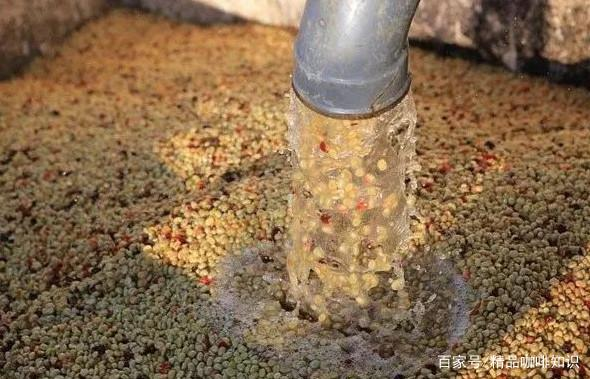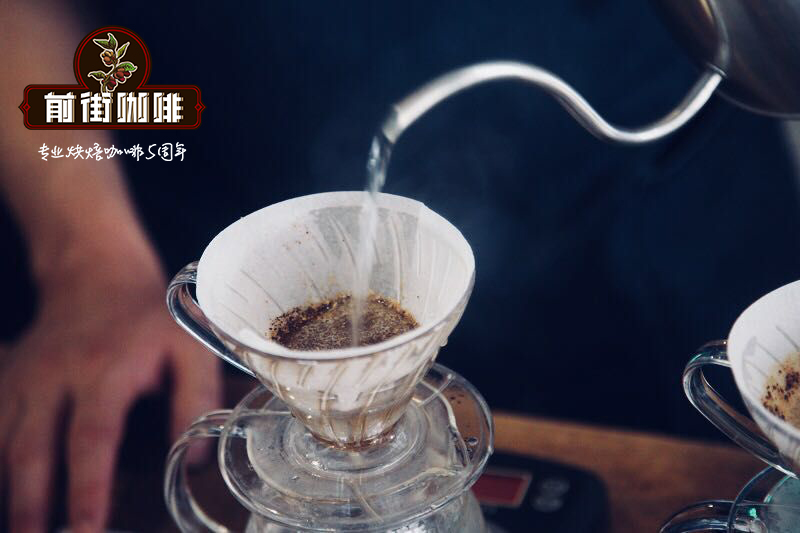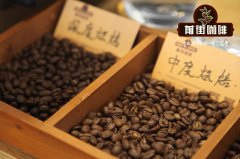What is the plan for tomorrow's sun? Caravani production area introduces Bolivia's COE Plan

Professional coffee knowledge exchange more coffee bean information please follow the coffee workshop (Wechat official account cafe_style)
A not-so-rich country, an unknown coffee-producing country, a tough road, but the farmers never give up for the sake of faith. What Qianjie wants to share today is a small coffee-producing country, but their perseverance and persistence in coffee is very admirable. This country is Bolivia.
Bolivia is one of the poorest countries in Latin America, a landlocked country bordering Brazil and Colombia. Although it is a country with great potential for coffee exports, its production has been quite scarce and the conditions for growing coffee are excellent, but the challenges are also extremely daunting, resulting in an extraordinarily rich agricultural history built on a very difficult land.

The origin of coffee can be traced back to 1880, when all production was basically related to the owners of some large farms north of La Paz. In 1991, the government promoted a plan for indigenous people to grow coffee, but paid little attention to quality. This is due to the backward economic development and infrastructure of Bolivia, which is still the poorest country in South America. In addition, due to the unique and changeable terrain, Bolivia has become a key factor in coffee processing, transportation and quality killer because of poor infrastructure.
Bolivia is located in the western center of South America, with an area of 1098581 square kilometers, about three times the size of Montana. The two mountains of the Andes span western Bolivia and form three major geographical regions of the country: the mountainous highlands and plateaus in the west, the subtropical Yungas and temperate valleys on the eastern slopes, and the tropical lowlands across the north. The eastern region is called Oriente 1.
Bolivian coffee beans are concentrated in rural areas of Yungas, with about 95 per cent of production. Other developing regions include Santa Cruz, Beni, Cochabamba, Tariha and Pando. Despite the existence of commercial farms and estates, the Government's land reform has expropriated most of the large land and redistributed it to rural families. These small plots of land cover an area of 1-8 hectares and produce 85-95% of Bolivian coffee, most of which are Arabica coffee, organically grown.
Bolivia's "tomorrow Sun Project", that is, the plan to comprehensively promote Bolivian coffee, requires a lot of money and effort to coach small farmers, including technical support, breeding, pruning, harvesting and other important technology. and high prices to buy small farmers' coffee, so that farmers' income is the same as the quality of coffee, into a good cycle.

One: compete with coca leaves and lack the support of the government or national agricultural institutions.
The government encourages the cultivation of coca leaves, coca is easier to pick, harvests are available all year round, and farmers are more profitable. However, coca leaf cultivation must use a large number of chemical pesticides and fertilizers, which can do great damage to the soil, in other words, after several years of coca cultivation, the soil is too barren to grow any crops.
Two: leaf rust
Leaf rust was rampant in 2013 (a mold that attacks coffee leaves, making it impossible for coffee trees to photosynthesis).
In that year alone, Bolivia lost nearly 50% of its coffee production.
Taken together, Bolivia's coffee production has fallen by 70% over the past decade, making it a small coffee-producing country.
In order to prevent the loss of these wonderful flavors, the Rodriguez family, one of the main force of boutique coffee in Bolivia, began to help farmers improve the quality of coffee, thereby increasing profits, thus giving birth to the "tomorrow Sun" project.
They gave adequate technical guidance in seed selection, planting, picking, etc., and set up large-scale treatment plants to help small farmers complete the treatment process, and matched the subsequent sales, export and other services, which greatly increased the enthusiasm and income level of small farmers, and guarded the sharp decline of Bolivia's boutique coffee industry with practical actions.

The most famous producing area in Bolivia is Caravani, which is best known as Yongas Road, the world's most dangerous road nicknamed the Road of death, which was named "the most dangerous road in the world" by the Inter-American Development Bank in 1995.
For the past three decades, Pedro Rodriguez (Pedro Rodriguez) has been working to bring Bolivian coffee beans around the world. Although Bolivia has the ideal conditions for growing boutique coffee, years of agricultural challenges and failures have convinced many farmers that the dream of success and prosperity is out of reach. In order to face the difficulties head on, Pedro bought his own land, sent his children to agricultural schools, and set up coffee plantations for education and demonstration. In 2014, he launched the tomorrow Sun Project, which aims to educate growers to grow high-quality Bolivian coffee beans with a responsible attitude and sustainable economy.
Bolivia has all the ingredients to become a producer of high-quality coffee, such as altitude, fertile soil and continuous rainy season. However, rugged terrain and lack of infrastructure and technology make post-harvest quality control a challenging task. Funding from development agencies is working to establish processing facilities in rural areas so that farmers can have access to resources that help ensure high-quality beans while adding value to their products. To this day, more than 50 small coffee farmers have joined the tomorrow Sun Project.
Compared with other Latin American countries such as Brazil, Colombia, Costa Rica and Guatemala, Bolivia produces very small amounts of coffee. The specialty coffee industry began to develop in the 1990s and 21st century, when foreign aid-funded development projects set up coffee washing plants and provided farmers with training programs on how to harvest and dry coffee correctly, so that only good beans can be selected. prevent fermentation and maintain quality. The highlight of these coffee training programs was the COE Competition held in Bolivia from 2004 to 2009. This famous project trained farmers in quality control techniques and invited international coffee judges to choose the best Bolivian coffee beans. Jorge Valverde is the coordinator of the COE Program in Bolivia from 2007 to 2009.
Unfortunately, the Bolivian COE project was cancelled after the competition in 2009 because the Bolivian Government was very anti-American and did not want the United States Agency for International Development (USAID) to finance any more development plans in Bolivia, and there were no other plans. The source of funding for the COE project.

[washing treatment]
Rinse the coffee fruit with clean water, remove the immature fruit floating on the water, pass through the peel machine to separate most of the pulp from the coffee beans, and then guide the shelled beans to a clean tank, after about 16Mui 36 hours of natural fermentation, dissolve the surface pectin and then wash. Continue exposure to 1MMI for 3 weeks to reduce the water content to 12%, and then use the sheller to remove the shell.
Take Qianjie Coffee tomorrow Sun Project as an example.
Country: Bolivia
Landowner: Julio Gonzales
Variety: Kaddura
Altitude: 1600-1900 m

Kaddura
Kaddura, a natural variety of bourbon, was discovered in Brazil in 1937. Its tree is not as tall and shorter as bourbon. Kaddura is suitable for planting in the altitude area of 700-1750 meters, the higher the altitude, the better the flavor, which often has refreshing fruit sour taste and light sweet taste.
[Qianjie coffee brewing parameters]
Filter cup: V60
15 grams of powder
Powder / water ratio: 1:15
Water temperature: 90 degrees
Degree of grinding: BG#6S

[Qianjie coffee brewing technique]
After 30 grams of water is steamed for 30 seconds, the water is injected around to 125 grams, and after the water level drops by half, it continues to be injected to 225 grams, and the total extraction time is 2 minutes.
[description of coffee flavor in Qianjie]
Citrus acidity, berries, strawberries, cocoa finish.
Important Notice :
前街咖啡 FrontStreet Coffee has moved to new addredd:
FrontStreet Coffee Address: 315,Donghua East Road,GuangZhou
Tel:020 38364473
- Prev

Rwanda Guitri water wash red bourbon coffee hand brew suggestion _ how to drink Rwanda coffee beans?
Professional coffee knowledge exchange more coffee bean information please follow the coffee workshop (Wechat official account cafe_style) Rwanda Coffee Gatare Farmers Association (Rwanda Gatare Coop) roasting degree: central Anda is blessed with excellent coffee growing environment, including high altitude, stable rainfall, volcanic soil, organic environment, bean seed is a very prosperous bourbon. Never
- Next

Rwanda Laogrovo coffee bean brewing parameters sharing _ introduction to the flavor characteristics of Rwanda coffee beans
Professional coffee knowledge exchange more coffee bean information please follow the coffee workshop (Wechat official account cafe_style) Rwanda (Republika yu Rwanda) is a country in east-central Africa, the full name of the Republic of Rwanda, is located in east-central Africa south of the equator, landlocked countries. It is bordered by Tanzania to the east, Burundi to the south, Congo (DRC) to the west and northwest, and Uganda to the north.
Related
- Detailed explanation of Jadeite planting Land in Panamanian Jadeite Manor introduction to the grading system of Jadeite competitive bidding, Red bid, Green bid and Rose Summer
- Story of Coffee planting in Brenka region of Costa Rica Stonehenge Manor anaerobic heavy honey treatment of flavor mouth
- What's on the barrel of Blue Mountain Coffee beans?
- Can American coffee also pull flowers? How to use hot American style to pull out a good-looking pattern?
- Can you make a cold extract with coffee beans? What is the right proportion for cold-extracted coffee formula?
- Indonesian PWN Gold Mandrine Coffee Origin Features Flavor How to Chong? Mandolin coffee is American.
- A brief introduction to the flavor characteristics of Brazilian yellow bourbon coffee beans
- What is the effect of different water quality on the flavor of cold-extracted coffee? What kind of water is best for brewing coffee?
- Why do you think of Rose Summer whenever you mention Panamanian coffee?
- Introduction to the characteristics of authentic blue mountain coffee bean producing areas? What is the CIB Coffee Authority in Jamaica?

